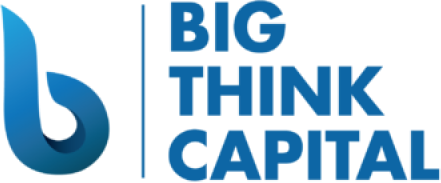Navigating the New Norms of Small Business Lending: A Comprehensive Guideline for Breaking Through the Noise of Increasing Interest Rates
Estimated Reading Time: 6 minutes
- Understand current lending trends and interest rate impacts.
- Evaluate a variety of funding options and their implications.
- Implement a proactive strategy to secure financing.
Table of Contents:
- Understanding the Current Lending Landscape
- Funding Options Amidst Rising Rates
- Three Practical Takeaways for Business Owners
- Creating a Comprehensive Financing Strategy
- Conclusion
- FAQ
Understanding the Current Lending Landscape
As of 2025, small businesses face numerous obstacles in the quest for financing. Economic headwinds, supply chain disruptions, and inflationary pressures contribute to an increasingly competitive lending environment. According to the Federal Reserve, interest rates are projected to rise further in the coming years to combat inflation, creating an imperative for business owners to be informed about their financing options. Understanding these trends will equip you with the insight needed to make smart decisions for your business.
Interest Rate Trends: The Federal Reserve has indicated a shift in monetary policy aimed at curtailing inflation, which has had a direct correlation with rising interest rates. As of early 2025, the average interest rate for small business loans has increased by 2% compared to the previous year.
Impact on Small Businesses: A Harvard Business Review report highlights that higher interest rates can lead to increased borrowing costs, tightening cash flow for small businesses. With more expensive debt, business owners must weigh their options thoughtfully.
Funding Options Amidst Rising Rates
Despite the challenging environment, various funding options remain available to small businesses. Each comes with its unique pros and cons, making it critical for owners to evaluate which method suits their needs best.
- Working Capital Advances: These are versatile funding solutions designed to provide quick access to cash. They are beneficial for operations needing immediate cash flow or unexpected expenses. However, the repayment terms, based on daily credit card sales, can lead to higher costs if interest rates rise.
- SBA Loans: Backed by the Small Business Administration, these loans offer favorable terms, often with lower interest rates compared to private lenders. However, they tend to have longer processing times, which may not suit businesses looking for immediate financing.
- Equipment Financing: Invest in necessary tools or machinery while securing financing. This option allows businesses to purchase needed assets without a significant upfront cost. Payments are spread over time, but higher rates can increase the total cost of ownership.
- Merchant Cash Advances (MCA): Ideal for businesses with substantial credit card transactions, MCAs provide a lump sum upfront, which is paid back with a percentage of future sales. While quick and convenient, interest rates can become quite high, especially with rising base rates.
- Lines of Credit: These offer flexibility, allowing businesses to borrow what they need up to a specified limit. While always a good option for managing cash flow, be cautious of variable rates that may climb as interest rates increase.
Understanding these options will help business owners make informed choices regarding financing.
Three Practical Takeaways for Business Owners
- Plan Ahead for Interest Rate Changes: With interest rates projected to climb, now is the time to secure funding. Locking in a lower rate today can save your business significantly in the long run.
- Consider Alternative Financing: Traditional loans aren’t the only option. Explore non-bank lenders or alternative financing to find solutions that match your business needs and financial situation.
- Strengthen Financial Resilience: Focus on building a reserve of capital. This safety net can help mitigate the impact of rising rates or economic downturns, giving your business the flexibility it needs to thrive.
Creating a Comprehensive Financing Strategy
In the current economic climate, it’s essential to adopt a thorough approach to financing. The following steps can assist you in developing a sound strategy:
- Assess Your Financial Health: Start by reviewing your business’s financial statements, including cash flow, profit margins, and existing debt levels. Understanding your financial position will provide a clear picture when seeking funding.
- Set Clear Objectives: Define why you need financing. Is it to cover operating expenses, invest in new equipment, or expand your business? Having specific goals will guide your conversations with lenders.
- Research Lenders and Products: Not all lenders are created equal. Look for lenders who specialize in small business funding and understand your industry. Compare terms, rates, and repayment structures to secure the best deal.
- Prepare Your Documentation: When applying for financing, be prepared with essential documentation. This should include tax returns, profit and loss statements, and a detailed business plan. The more complete your application, the smoother the process will be.
- Engage with Funding Experts: Seek out funding professionals who can guide you through the lending process. At Big Think Capital, our experts are dedicated to helping business owners navigate their options. We provide guidance tailored to your unique circumstances, empowering you to make informed decisions.
Conclusion
Navigating the complexities of small business lending in an environment of rising interest rates can seem daunting. However, by understanding the funding landscape and taking proactive steps, business owners can overcome these challenges and secure the resources needed to fuel their growth. Whether you are considering working capital advances, SBA loans, or alternative financing solutions, it’s crucial to evaluate your options carefully and engage with knowledgeable professionals.
For further insights and assistance, visit us at bigthinkcapital.com, where our dedicated funding experts are ready to guide you through your financing journey. Empower your business for success—start exploring your funding options today.
FAQ
What are the common types of small business loans? Common types of small business loans include SBA loans, equipment financing, working capital advances, and lines of credit.
How can rising interest rates affect my business? Rising interest rates can increase borrowing costs, tighten cash flow, and lead to more expensive debt financing.
What should I do to prepare for applying for a loan? Prepare by assessing your financial health, setting clear objectives for borrowing, researching lenders, and gathering necessary documentation.






